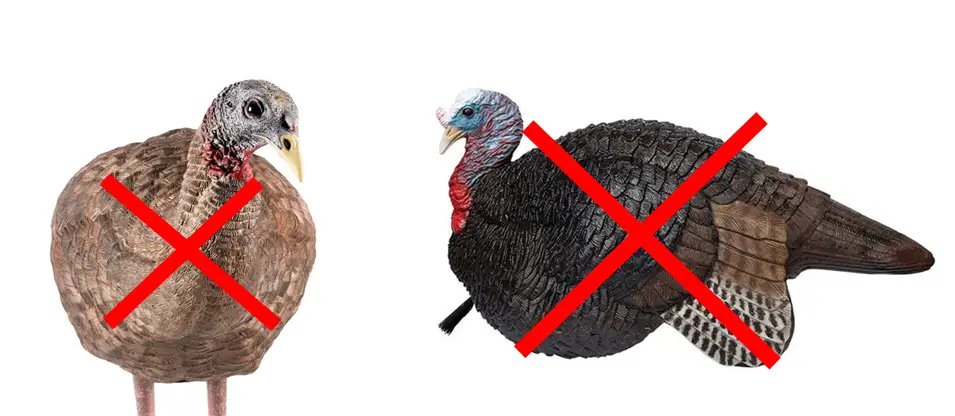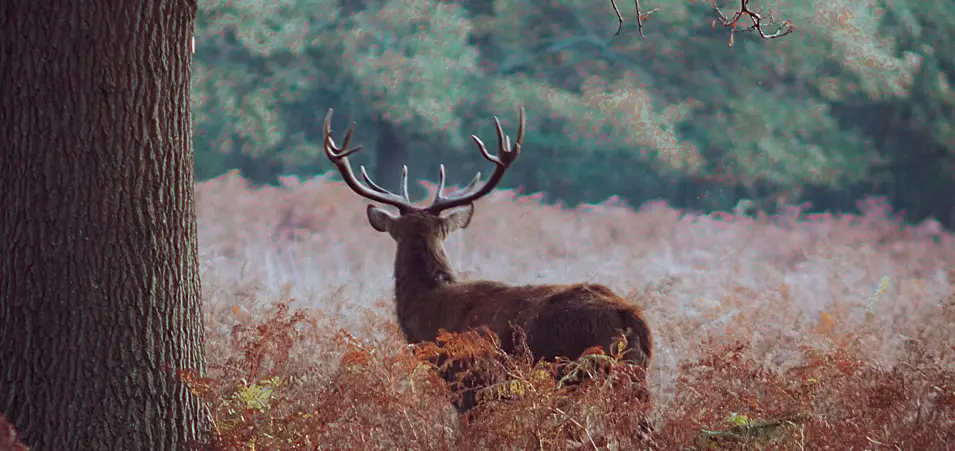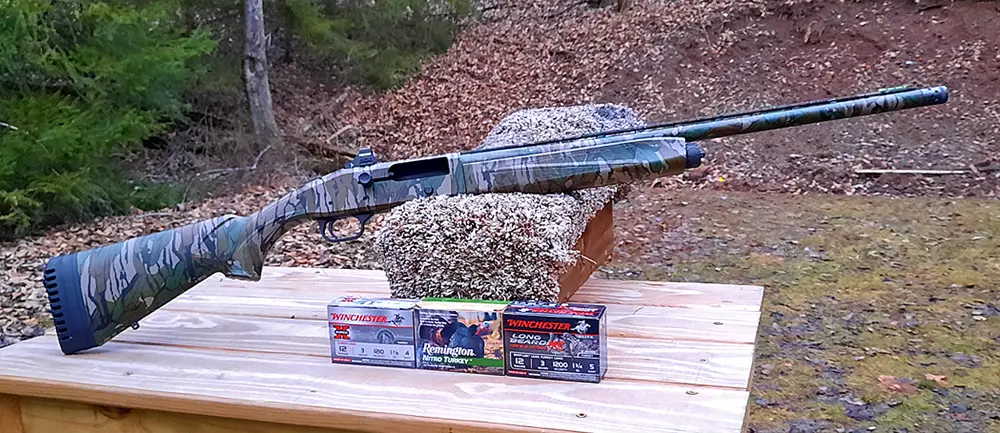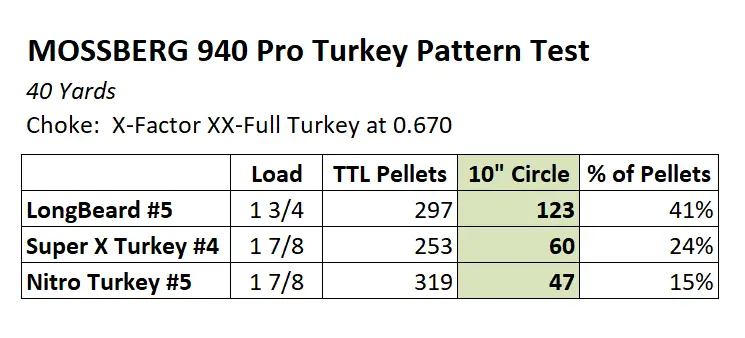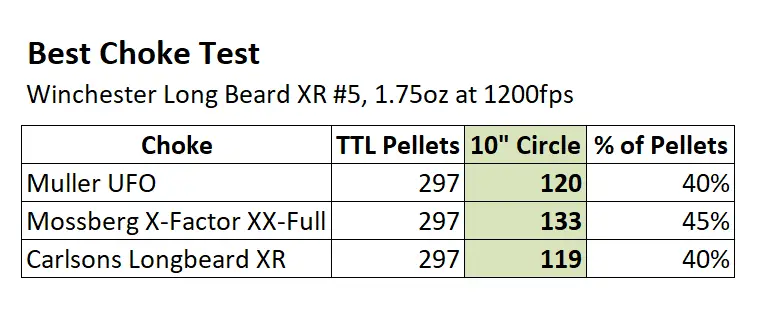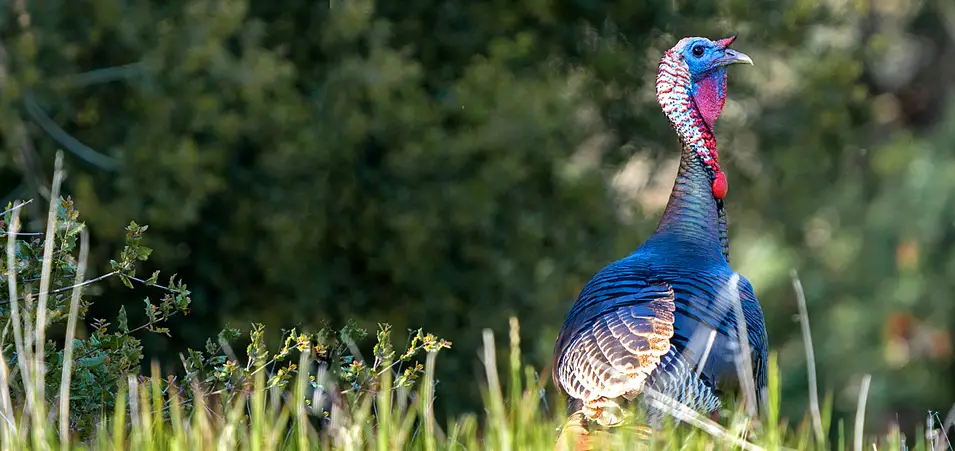If you watch TV or YouTube it would be easy to think you must have decoys to hunt turkeys. The truth is, in many situations, decoys are a liability for turkey hunters. There are reasons they are almost always used when video recording a turkey hunt, and there are indeed times when using a turkey decoy is beneficial, but for most hunting situations they can do more harm than good.
Since the dawn of turkey hunting until just a few years ago, decoys were not often used. Many turkey hunters chased spring gobblers their whole lives without using a decoy. And when decoys became available, many hunters found them to add little benefit. I am convinced that new hunters should not use a decoy except under a handful of circumstances which I will outline soon.
I am not a decoy hater, I do sometimes hunt with turkey decoys and have shot toms with their assistance, but only under very specific conditions have I found them to be more good than bad. If you rely on decoys then chances are you have adapted your hunting style to one of the specific approaches that benefits from decoys, which is just fine. But in this article, I will share additional hunting strategies that can help you save time, money, and effort by skipping the decoys and being even more successful than if you had used a decoy.
For entry level info on how to hunt turkeys in general, check out this article I wrote: How To Hunt Spring Turkeys – A Practical Beginners Guide.
Why Are Decoys Used In TV Hunts?
There are four main reasons that decoys are so often used in turkey hunting videos online and on TV:
- The turkey hunters work for a decoy company. This is pretty obvious, they are making the video to demonstrate that their decoys work so they can sell decoys. They may have had 10 failed hunts but the only one that makes it to you is the successful one to make you feel like this works every day.
- The hunters are sponsored by a decoy company. Again, there is money involved to show the decoys on camera and create the perception that they are a must have piece of turkey hunting hardware to bring home a nice tom.
- You need to get turkeys into the frame where the camera can be effectively positioned to film them. And you need to have those turkeys in that spot long enough to get enough footage to make a good video. Decoys can help with this, when they work. Again, you never see all the failed hunts or turkeys that were spooked by the decoys and didn’t come in.
- You need to draw turkeys into a very open area where they can be easily filmed, free from brush, clutter, branches, and tall grass. Decoys can help you do this and are valuable if the goal of getting footage is more important than filling your tag.
How Can Turkey Decoys Be A Negative?
The benefit of a turkey decoy seems obvious, the hunter makes turkey sounds and when a real gobbler gets close, he sees what looks like the hen turkey making the calls and comes in to court her. That sounds great, and it does work. But it can cause problems just as often, if not more often. The reason is that this is not how nature works for turkeys. When the tom sees the hen, he often gobbles to get her attention and may strut to show off. The idea is he wants the hen to come to him. That is how it normally works. If a hen wants to breed, she seeks out a gobbler.
So, if an interested tom is lured into an area by a hen turkey calling, he may gobble, but he goes on trying to get close enough for the hen to hear or see him. When he doesn’t see the hen, he keeps looking. This is what brings him within shotgun range. The gobbler only knows the general area he last heard the hen, she may be far away by the time he gets there, but he comes looking, trying to close the distance to get her attention so she will turn and come to him.
When that gobbler sees a decoy, it is as if he accomplished his objective. He closed the distance, and now the hen should come to him. So he stops getting closer, this what it means for a gobbler to get “hung up”. He comes until his sees the decoy or feels he is close enough for the hen to be aware of him, and he waits for the hen to come to him.
Decoys do still work because sometimes the tom is so eager that he will just walk right up to the hen and try to breed her. But this is more the exception than the rule for how turkeys generally behave.
Carrying decoys around on public land can also be a big safety hazard. To many times a desperate hunter saw a turkey decoy moving through the brush and shot at it irresponsibly, wounding another hunter. For more, here is a podcast episode I did: The 3 Times Turkey Decoys Are A Liability Not A Benefit.
The Right Times To Use Decoys
I find there are a handful of hunting situations where using a turkey decoy is more good than bad. And I will use them under these circumstances.
- If you are hunting in the middle of a field from a blind, decoys may be what you need to get a gobbler to cross the distance to come to you, or even to pull in a whole group of turkeys. There is not much else you can do to try and get turkeys to cross open ground and come into a wide-open space. They can plainly see if another turkey is there or not. So, if you do not have decoys, it can be very difficult to find success here.
- If you are hunting the edge of a big field, you may find decoys beneficial for the same reason. If you want a turkey to come into the open, it helps to give them one or more other turkeys to look at.
- If you are hunting in clearing in deep woods, especially one surrounded by open hardwoods, the decoy will set a gobbler more at easy because it can connect your yelps and clucks to another turkey. This creates authenticity.
In each of these situations the decoy may hurt you, but not having one may make the hunt nearly impossible. If a turkey looks into a wide-open area and does not see the turkey it hears, that can cause it to spook much easier. So having a decoy is worth the risk. For the last few years, I’ve been using a version of the Primos Hunting Gobstopper Hen and Jake Combo to great effect when hunting in these kinds of places. They are a mid-range decoy that I think provides the most realism and durability for the price. For higher end decoys, Avian-X makes some extremely realistic one, like this Breeder Hen Decoy.
When It Is Best To Not Use Decoys
The best time to not use decoys is essentially every other hunting situation. If you find tress, brush, cover of any sort, then not using decoys is going to be advantageous, even if you can still see a fair way through mature hardwoods. The reason is that there are plenty of obstacles than can obscure the view of the hen the gobbler is looking for. So he keeps searching, trying to make visual contact with the hen. She could be behind any tree or shrub, and he keeps looking.
In these kinds of situations, the chances of a gobbler coming into range looking for his hen are much higher and having a decoy does very little to help you while there is a good chance it will hurt you. If it is too thick, the gobbler may not even see the decoy anyway. Or he may see it and get hung up. So for essentially all hunting in the woods, the odds can be better for you, if you have no decoy.
Of course, a decoy can always work. Anything is possible. But in these situations, I think you will have more success without a decoy, especially if it is a very thick area. Here is a video I did on this exact subject as well:
Strategy #1 – The Strategic Sit
This is one of the most effective turkey hunting strategies, and sadly one that is too infrequently employed. The strategic sit involves heavily scouting an area, possibly even a very small property, and locating high levels of turkey activity via tracks, sightings, droppings, scratches, cameras, or listening. You then strategically select the most advantageous hunting spot and head in there before dawn. You find a good large tree or bank of cover and lean against it to break up your outline.
You wait until you hear early morning gobbling and then reposition yourself to be facing the right direction or shift your location some to get you closer to 150 yards of the roosted birds. You then try to call them in once they land. How you hunt them warrants its own article but the main thing is to always keep something to your back so you blend in as part of the bush or the base of the tree.
If you do not have decoys, you have to be more stealthy and less vocal as the birds get closer. The gobbler will be intently searching for that hen. Which is why this works, he will keep coming closer if he doesn’t find what he’s looking for. If possible, your only move should be to pull the trigger. This hunting style should not be confused with blindly going into the woods and hoping turkeys are near you, unfortunately this is what most hunters do. This is all about strategy and if you do it well, you will come out on top more often than if you were using a decoy. For more, here is an article I did titled: How To Hunt Turkeys On Small Properties
Strategy #2 – Running & Gunning
Running and gunning is too many people’s favorite way to hunt turkeys, they like it because it’s active, you keep moving and need less patience. Subsequently many people are unsuccessful because they do not know what they are doing and have too little patience… That said, this technique does work. And it works better without decoys much of the time.
You will be covering ground and stopping every 200 yards or so to call. How far you travel should depend more on the terrain and where you can hide well than any specific unit of distance. When you call, you may get an immediate response and have only seconds to take cover before the bird is on top of you. So pick out that spot first, then call and wait.
Be patient, pause, perhaps try a couple different call or sequences of calls, and put some time in between them. If you have reason to believe this is a good area do not be afraid to spend some time here. Too many people call and move on after 30 seconds if there is no gobble. Then 10 minutes later a gobbler is standing right where they were but they never know about it. For more, here is a podcast episode I did titled: How To Hunt Silent Turkeys.
To hunt well like this, you need to be extremely stealthy. Birds often don’t gobble because they heard you walking in, making noise, talking, setting up decoys, etc. Having no decoy means you can travel lighter, quieter, and less distracted. You do not have to setup a decoy every time you call or hear a response while you scramble to figure out what to do. Be stealthy, be patient, find the right place to hide early, and you can have good success.
Strategy #3 – Ambush Hunting
Ambush hunting turkeys is one of the least favorite techniques of people who do not take a lot of turkeys. They see it as not exciting enough and would rather be walking miles spooking every turkey out of the county than learning where birds move mid-morning or mid-day and lying in wait to ambush them. This technique revolves around scouting and knowing the land and terrain.
Similar to deer hunting, you are patterning the turkeys, learning their habits, and setting up with total stealth to catch them unaware. If you do not scout, don’t try this, you won’t have the reconnaissance needed to give you the confidence to stay put and wait for the birds to show up. This strategy puts you near the path of the birds, a route they will be traveling anyway. Having a decoy can only cause problems because the birds were going to walk through there anyway. You didn’t need the decoy to do anything, it just becomes a distraction and a liability.
If you want to take a lot of turkeys, you must adapt to hunt the land an opportunity provided. A good ambush hunt, especially later in the morning or in the day has put a great many turkeys in the freezer. For more info on how to hunt turkey’s check out this video I did:
Conclusions & Recommendations
There is nothing wrong with hunting turkeys with a decoy. It certainty does work. But turkey hunts on television make it seem like it works much more often than it actually does. If you are hunting in a scenario where decoys are helpful, then use them. But do not limit your hunting to only those situations.
One of the greatest things about turkey hunting is the amazing variety of ways you can hunt. Build your experience hunting with different strategies and you will be well prepared to adapt to whatever you encounter during the next turkey season.
Be sure to listen to The New Hunters Guide Podcast and check us out on YouTube.
Till next time. God bless you, and go get em in the woods!
George Konetes Ph.D. – Founder and Host of the New Hunters Guide.
The New Hunters Guide is simply what George wishes he would have had when learning how to hunt; a single place to get practical hands on knowledge about different kinds of hunting, gear, strategy, and tips that can improve your comfort and fun factor in the woods.

